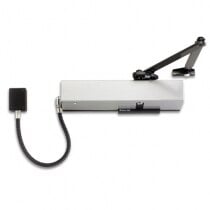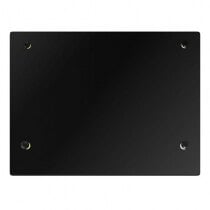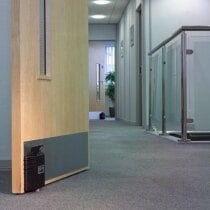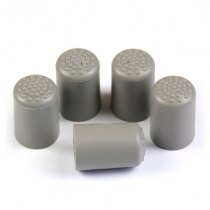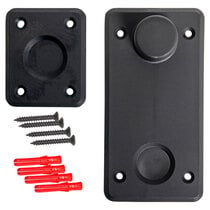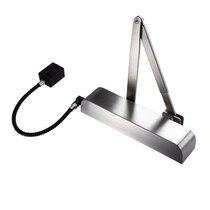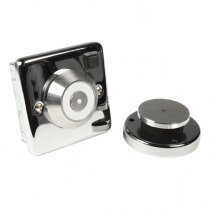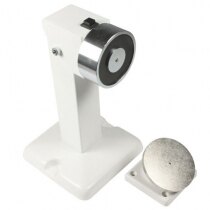-
Contact
Sales & Customer Service
0800 612 6537 support@safelincs.co.uk Live ChatDelivery Enquiries
0800 077 6149 - Resources
Fire & Safety Solutions
CALL OUR TEAM NOW 0800 612 6537
Lines open today 8am - 6pm
FREE Delivery
on marked products
Live Chat - Online
Instant help & Advice
Trade Discounts
and exclusive pricing
0% Credit Available
Open an account now
5 Star Customer Feedback
Dorgard and Other Fire Door Holders
The Dorgard Fire Door Retainer, along with other fire door holders, allow fire doors to be held open safely. These fire door ‘hold open’ devices secure the door open in normal day-to-day operation, improving ventilation and accessibility. In the event that a fire is detected, the fire door retainer will release the door automatically, so that it closes to aid compartmentalisation during an evacuation.
Choose from wireless, easy-to-install fire door retainer solutions that operate accoustically, listening for the sound of your fire alarm to trigger release of the fire door. Or, wired fire door holders that connect directly into your fire alarm. Electromagnetic fire door retainers also provide a reliable and descreet solution for holding fire doors open.
Please see our technical fire door retainer overview for more information and guidance as to which fire door retainer is best for your premises.
Briton 996 Hold Open Free-Swing Door Closer
- Door operates without resistance in normal use
- Fixed power sizes EN 3, 4 & 5
- 120 minute fire rating
- Adjustable closing speed and latching action
- 10 Year Mechanical Parts Warranty
Dorgard Adapter Plate for Steel Doors
The new Dorgard adapter plate enables the Dorgard fire door retainer to be used on steel doors
Dorgard Fire Door Retainer Installation
Enquire about our Dorgard Fire Door Retainer installation service. Once installed, the Dorgard provides a legal alternative to holding your fire doors open to provide maximum convenience in high traffic areas.
- Installation by trained and experienced engineers
- Peace of mind that your Dorgard installation is compliant
- A safe and legal solution to holding fire doors open
- Provides convenience in high-traffic areas of buildings
Dorgard Replacement Feet (Pack of 5 or 100)
These spare units are designed for replacement of the Dorgards feet as recommended by the manufacturer every 12 months.
Floor Plate for Dorgard Fire Door Retainers
The Dorgard floor plate protects your floors from wearing due to the Dorgard's ferrule and ensures a good grip to hold the door open on slippery surfaces. Available with or without integrated door stop can prevent doors being slammed into walls.
Exidor 9870 Electro-Magnetic Free-Swing Door Closer - Power Size EN 4
- Fixed power size EN 4
- Door operates without resistance in normal use
- Adjustable closing speed and latching action
- Free-swing and hold open configuration options
- 2 year warranty
Conquest Surface Mounted Door Holders
- Surface or flush mounted fire door holder
- Available in 24V DC or 230V AC versions
- Approved to BS EN 1155 and CE Marked
Decorative Fire Door Holders
- Flush mounted decorative door holder
- High quality chrome, stainless steel or lacquered brass finishes
- Convenient manual release switch
- Suitable for installation in prestigious locations
Decorative Surface Mounting Kits
- Surface mounting kit for the decorative door retainers
- High quality chrome, stainless steel or lacquered brass finishes available
- 20mm entry holes and blanking plugs
Universal 500N Pole Magnets
- Floor, wall or ceiling mounting
- 500N holding force
- Ideal for fire doors with no retaining wall
- Adjustable 90° head
- Rugged steel fabrication
Page 2 (30 of 30 Products)
What is a Fire Door Retainer?
What is a Dorgard?
Hold Open & Free Swing
What is a Fire Door Retainer?
Fire door retainers are accessory devices for fire doors which enable them to be held open during normal use of the premises. This improves accessibility for everyone, and especially young children or those with limited mobility, whilst also improving ventilation. In the event of a fire, the devices will be triggered (either by an electronic signal from the fire alarm panel, or the sound of the alarm) to release the door, causing it to close. This ensures that the fire door is shut and will be effective in slowing the spread of smoke and flames throughout the building.
Why do fire doors have to be kept shut ?
Fire doors are an important part of any building's fire safety strategy. They have two functions: to enable movement throughout a building, and to slow the spread of smoke and flames throughout the building in the event of a fire. Fire doors can only be effective if they are shut completely during a fire, which provides occupants more time to evacuate safely. This is why it is dangerous to hold fire doors open with a wedge or other object.
Can you keep fire doors open?
Fire doors can be held open only with specialist hold-open devices. These retainers allow occupants to hold fire doors open in a safe manner, while removing the temptation to wedge the doors open. These devices hold the doors open in the day-to-day running of the building but will release the fire doors if there is a fire. This allows the fire door closers to shut the door completely, protecting lives and property.
How do fire door holders work?
Acoustic sensors
Some devices, like the Dorgard, use acoustic sensors to 'hear' the fire alarm. This can be done through the detection of loud noises, or through recognising the sound of the fire alarm, depending on the technology installed. These are typically battery powered, and are usually quick and easy to install, even retrospectively.
Wired solutions
Some devices are wired into the building's fire alarm system. This means that when the alarm system is activated, the retainer system will be notified, and activated. These can be battery or mains powered, depending on the technology. These must be installed by a competent electrician, and some systems require extensive wiring, making them better suited for new builds than as retrospective additions.
Fail Safe
These devices also have a failsafe function, which will be activated during a power cut, or if the battery of the device dies. When power is lost, the retainer releases and causes the door close completely with the aid of a door closer. This ensures that in the event of a fire, compartmentalisation is maintained throughout the building.
What is a Dorgard?
What is Dorgard?
The standard Dorgard is a wireless fire door retainer, requiring neither mains power nor a fire alarm connection. It must be installed where the alarm sound level is above 65dB in order to trigger release. The battery-powered device ‘listens’ and triggers when a sound about 65Db is detected for 14 seconds or more, causing the door it is installed on to close. These devices are quick and easy to install, require very little maintenance, and are fully certified to BS EN 1155 (the standard which defines manufacturing and testing requirements for "Electrically Powered Hold Open Devices for Swing Doors" including fire doors).
How does Dorgard work?
Dorgard units allow a fire door to be held open at any angle by simply pressing the plunger down with your foot. If the fire alarm is detected, either in a drill or a real fire, the device will release automatically, retracting the plunger, causing the door closer to completely shut the door. The standard model listens for a sound level of over 65 dB, while the Pro model is wired directly into the building’s alarm system.
Buy Dorgard from Safelincs
Safelincs offer an exclusive FREE 5 year extended warranty on all three Dorgard models, excluding consumables such as batteries or feet, and any order containing a Dorgard qualifies for FREE shipping.
Hold Open & Free Swing
Can a door closer hold open a fire door?
Some door closers have retainer features, allowing them to hold open a fire door. These devices, such as Freedor, remove the need to install standard fire door retainers. When activated, these closers have the ability to hold a door open at certain angles (Hold Open models) or to temporarily disengage their mechanical components so that fire doors feel as light as normal doors (Free Swing models). Both models require power to work, either wired into a power supply or fitted with batteries, and will "fail safe" during a power failure – meaning that electricity is used to disengage the closing force and by default they will keep the door closed when no power is supplied.
If the building’s fire alarm is triggered, the mechanical force of the closer will engage, causing the door to shut. Therefore, these types of closer require either a wired connection to the fire panel, or to be in proximity of a fire alarm sounder.
What is a ‘hold open’ or ‘free swing’ feature?
Hold Open allows a fire door to be retained once it has been opened to a certain angle.
Free Swing also requires the door to be opened a certain amount before it activates, but from then on, the closing force of the device will be deactivated, allowing the door to operate and swing as a normal door.




















